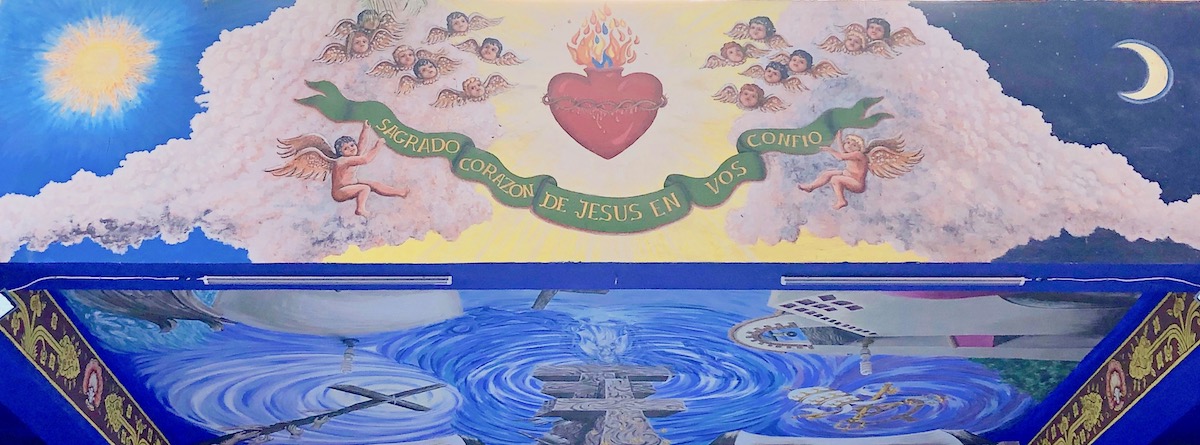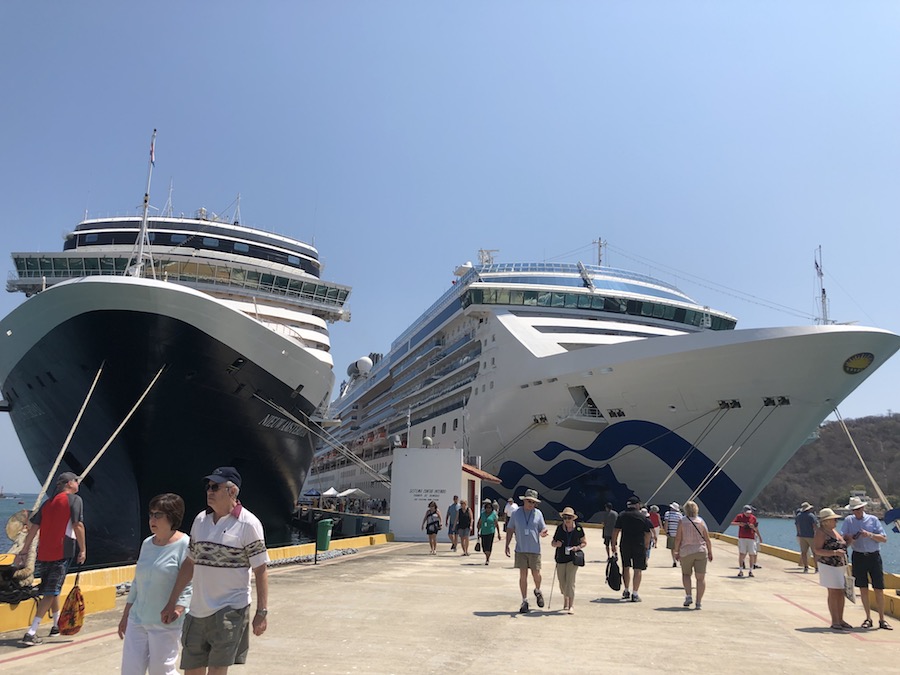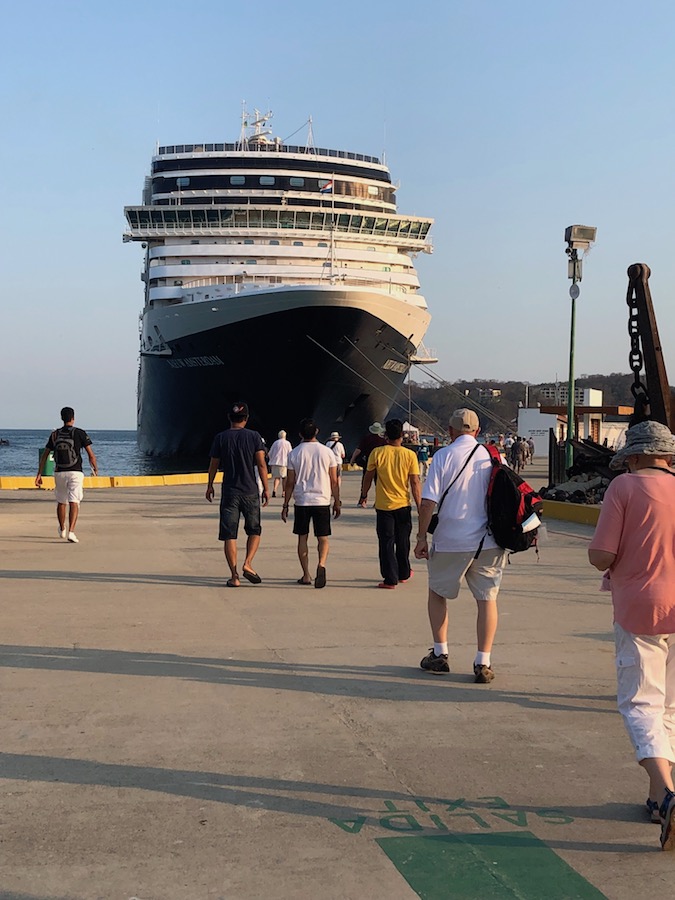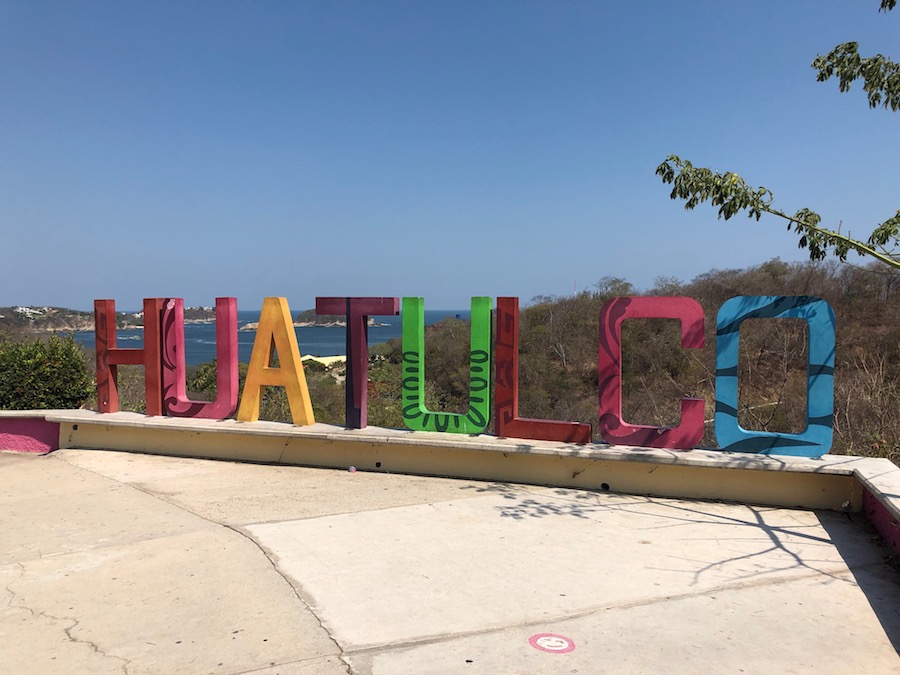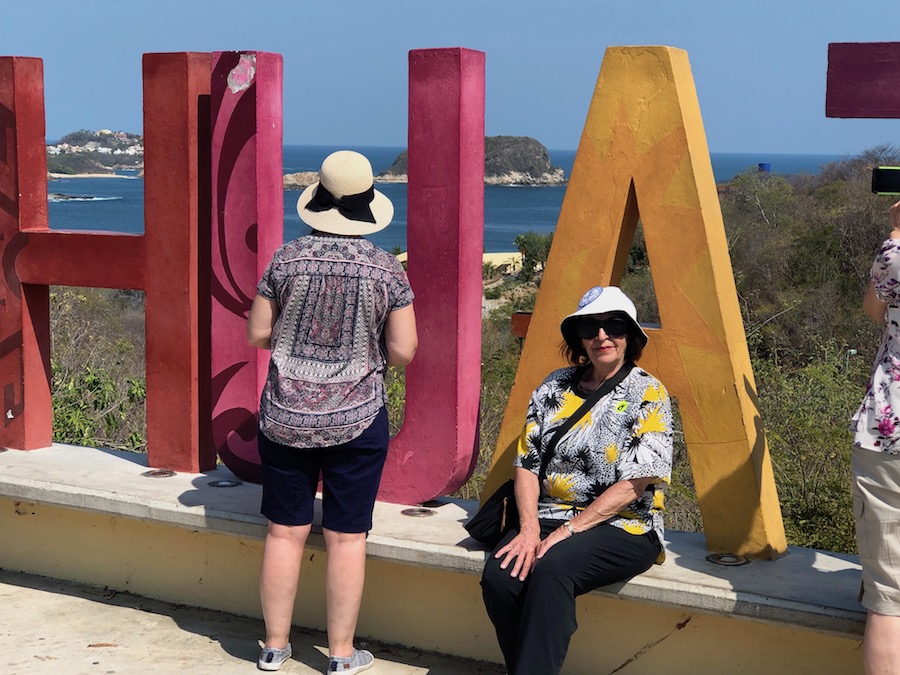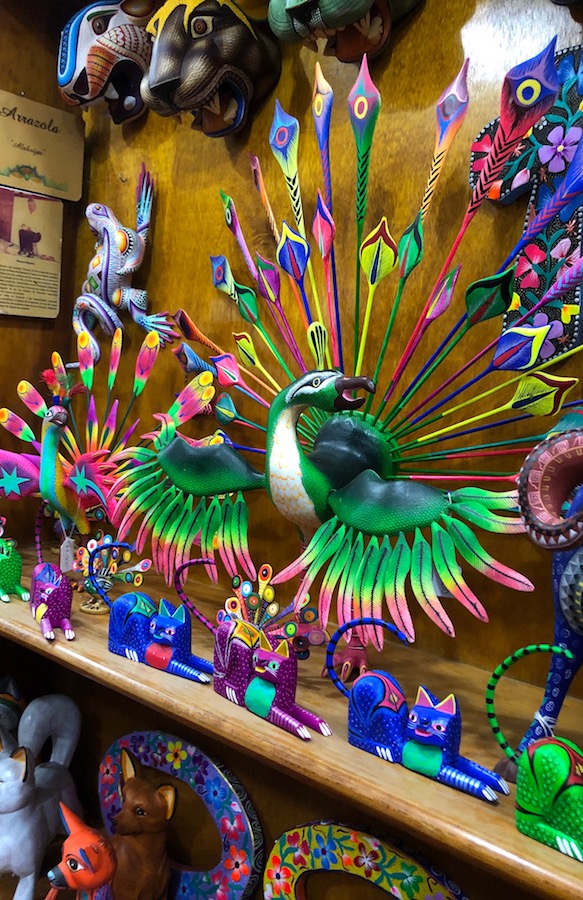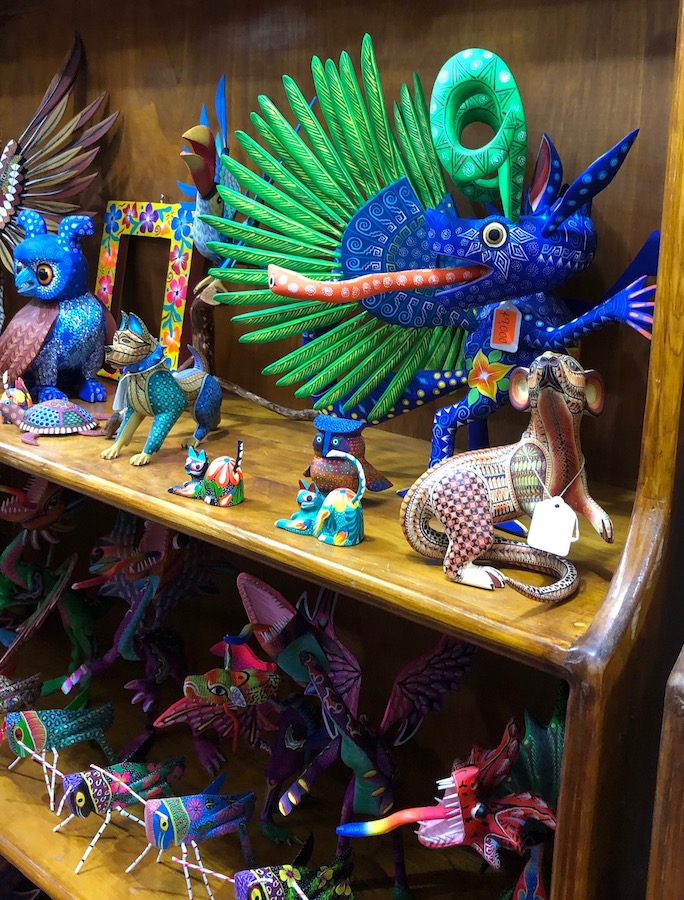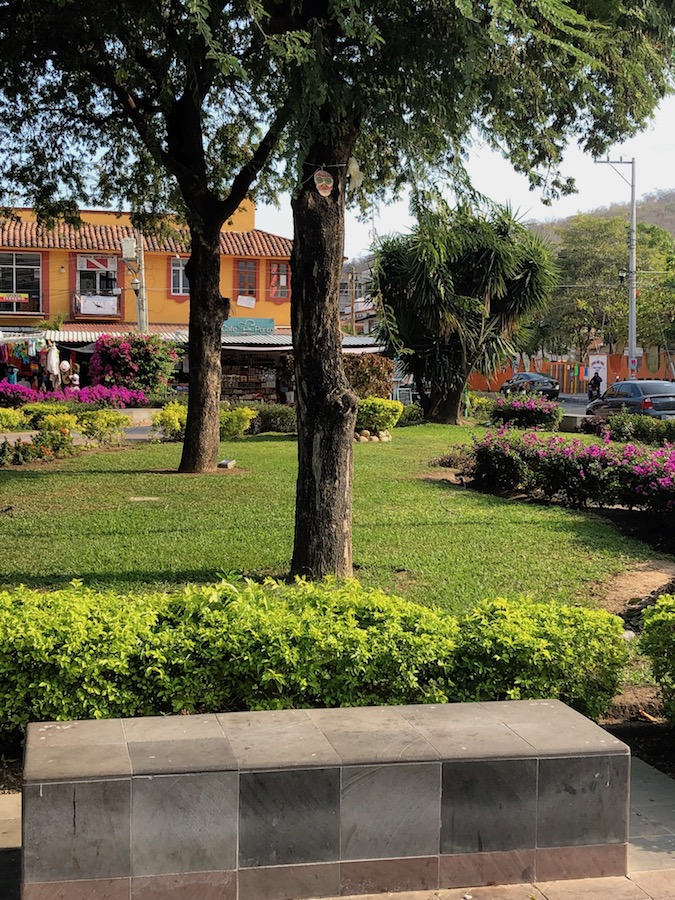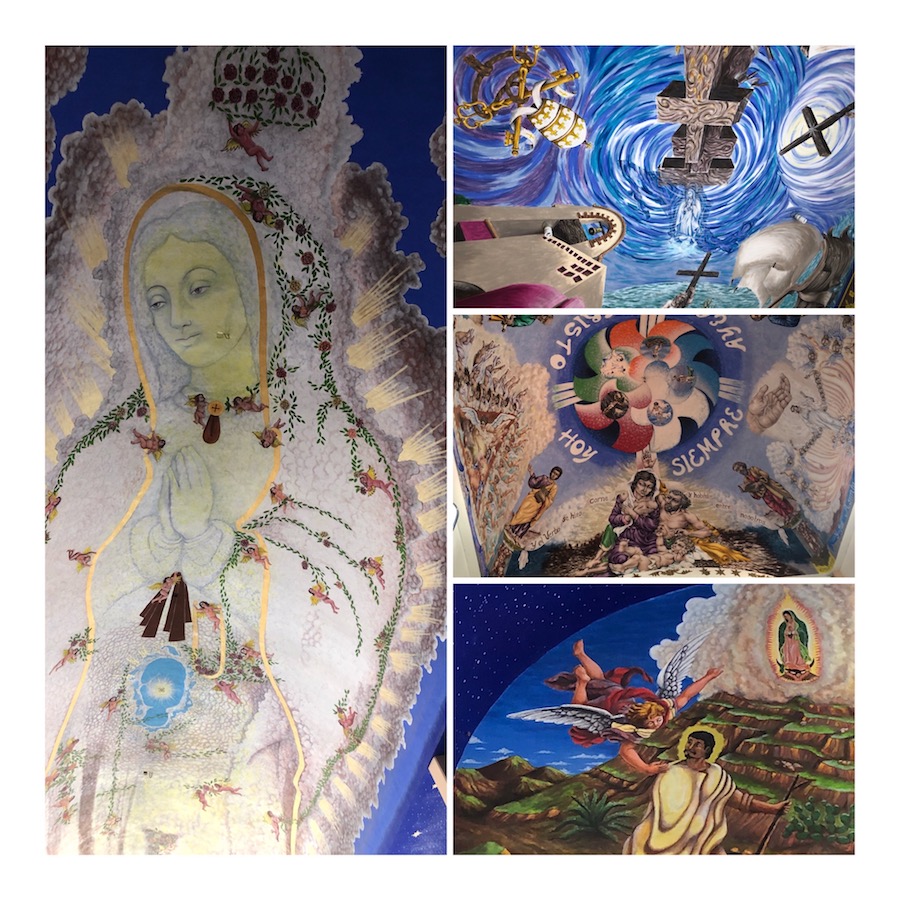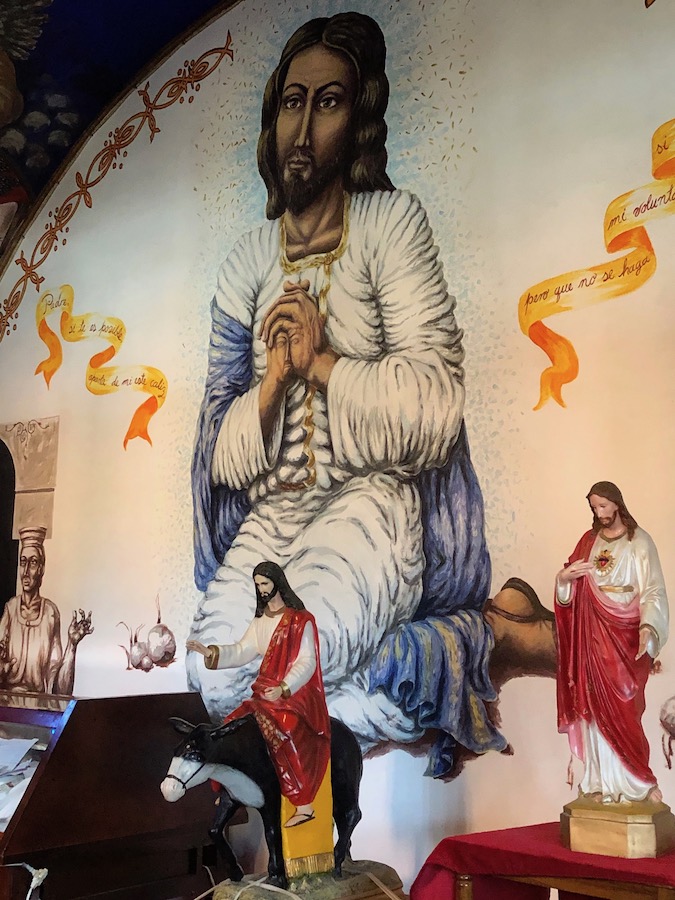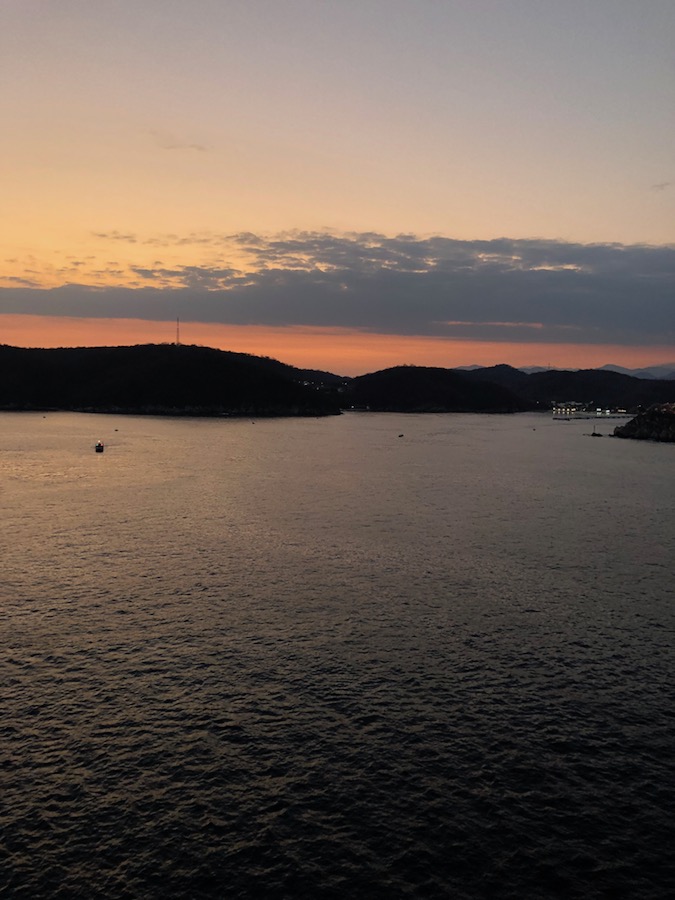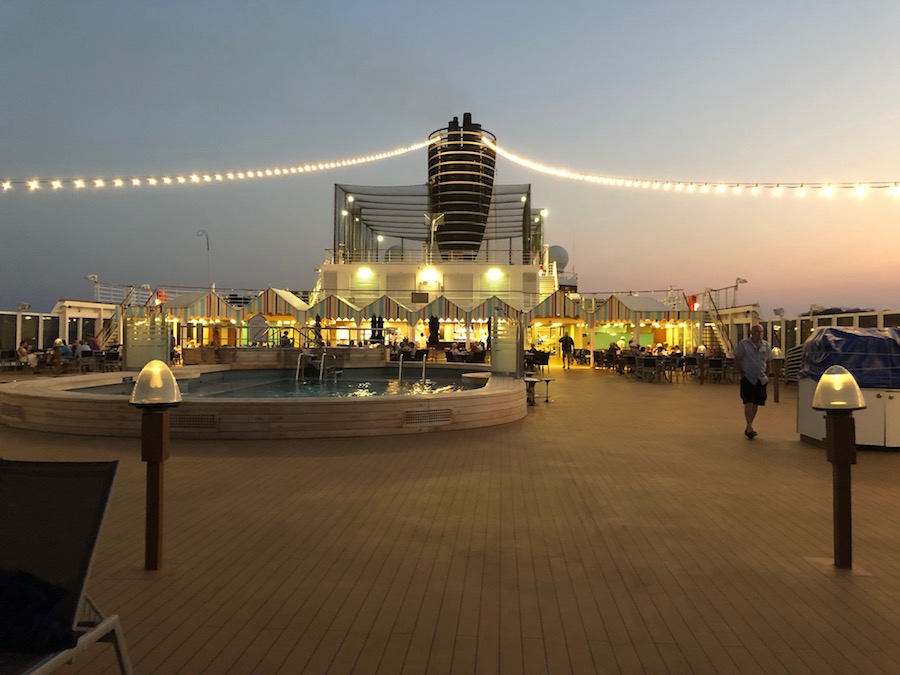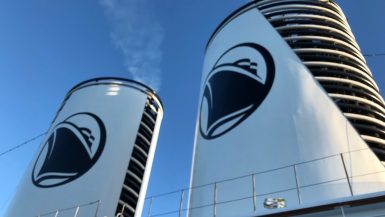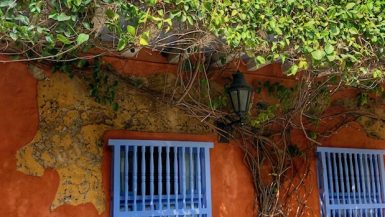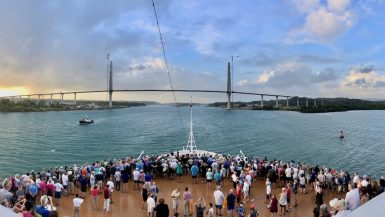March 12, 2019
Our day started with a lecture on Mexico. Well, actually, it started off with breakfast and then the lecture, but every morning on the ship starts with more breakfast options than humanly necessary so, that’s a given. The ship had been in Mexican waters for a while, but we wouldn’t dock in Huatulco until 1:00, so we had the morning to fill.
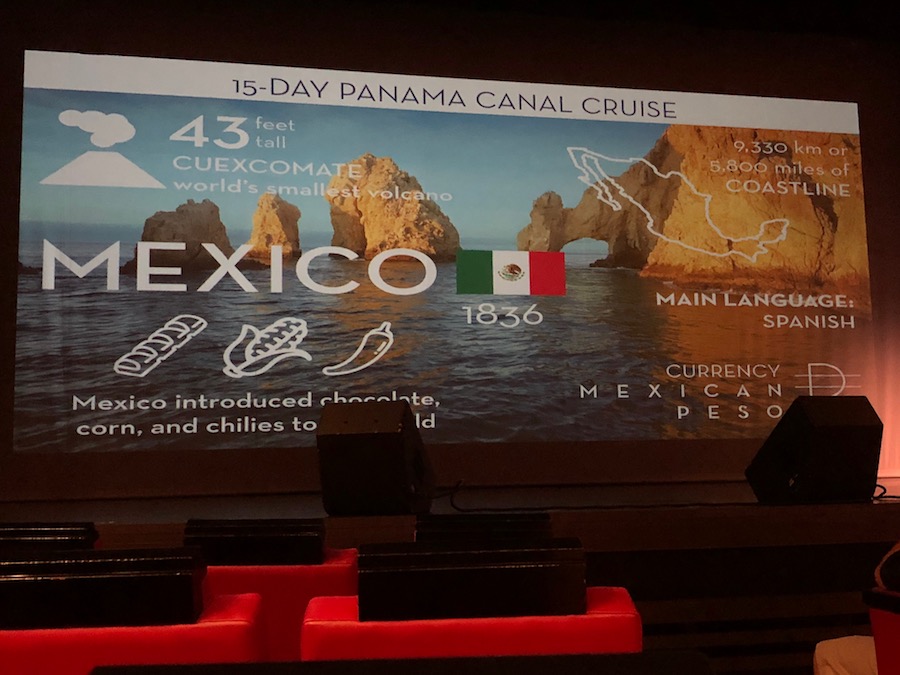
The ship’s Mexican ambassadors boarded at the last port, so we were treated to a folkloric performance by the pool at lunch (more food) just prior to docking. It got everyone in a festive mood.

Huatulco is in the state of Oaxaca, one of the economically poorer states in Mexico. Huatulco, however, boasts a better standard of living that many of Oaxaca’s towns because of the money its handicraft industry infuses. Known for its nine bays and 36 beaches, Huatulco is cosy, quaint, and beautiful.

The city itself was created by semi-private company Fornatur, which also receives funding from the government to keep the city clean and well-maintained – a job that is taken seriously. The community itself also takes the cleanliness of the community seriously; littering is not tolerated (graffiti is only problematic in a scant number of neighborhoods).

Huatulco is also a very secure city. We were told that the government struck a deal with the US and Canadian Coast Guard whereby their ships actively patrol the waters and the Mexican government provides free vacations for the Coast Guard crews. Who knew that was all it takes to get extra security?!
When we pulled into the bay at Huatulco, the Coral Princess was already in port, having arrived earlier in the morning.
As we disembarked, the Princess passengers were returning from their tours and excursions. The pier was teeming with people coming and going.
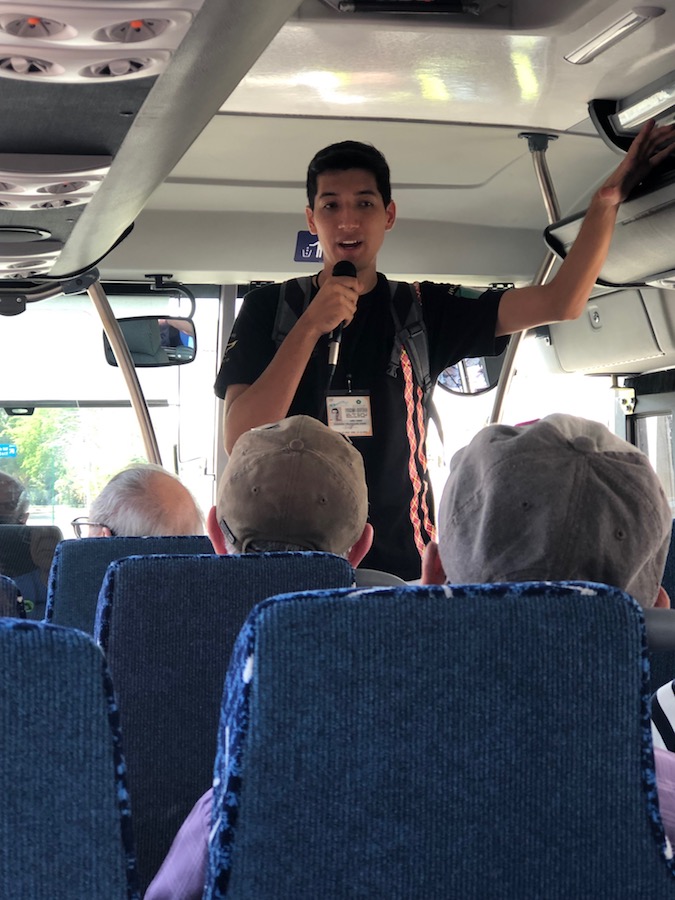
Our guide for the afternoon was Roy, a very nice young man (and also easy on the eyes).
As with all the prior guides, he was full of fun facts:
- the population of Huatulco is approximately 40,000 (approx because it is about time for another census)
- the average temperature is 90 degrees; the coldest it gets in the winter is 60 degrees; the hottest it gets in the summer is 100 degrees – air conditioning is a must
- Alto (stop) signs are just “traffic suggestions” or identify a bus stop
- drivers do not have to take a written exam, a driving test, or even have their eyes checked – Roy’s recommendation? Don’t drive in the area, drivers can be crazy
- 20 minutes in Mexican time actually means at least 40 minutes in American time
Our bus took us up a hill to a viewpoint high above the two cruise ships. The ocean sparkled, awash in a palette of blues and greens.

Our next stop was a photo opp with the Huatulco sign (every touristy city has a selfie-worthy sign of the city’s name).
Off to the side of the sign, Roy pointed out a young Ceiba tree. The Aztecs believed the Ceiba tree was holy because the roots run so deep they must go all the way to hell, while the tree grows so tall that its branches must reach all the way to heaven. When the tree is mature, the trunk is hollow. The Aztecs and their descendants believe souls get trapped in the hollow space, so it is not unusual to see someone hugging the tree to impart love and good vibes to the lost souls.

As we drove outside the downtown area, Roy pointed out where all the five star hotels were (Tangolunda), which bays were good for swimming, and which bays were good for surfing (Bocana beach is for surfing).
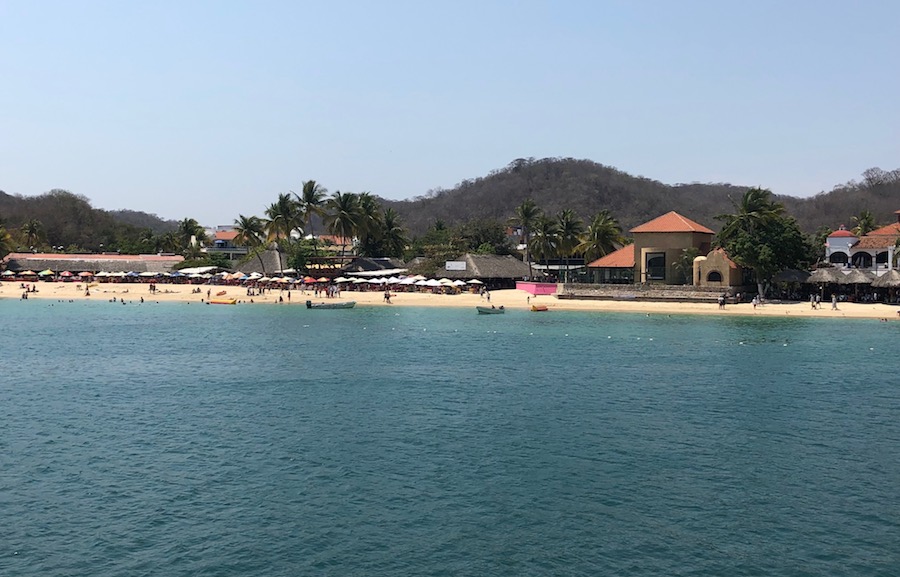
He also explained the cost of living is relatively inexpensive – apartments cost approximately $200-$300 per month, electricity costs roughly $8 per person per month, and groceries for one person run $100 per month. Gas, however, is pretty expensive at $3.80 per gallon. While the raw materials are extracted locally, they are sent to the US for refining and then Mexico buys it back – thus, the high price.
The downtown area (La Crucecita) is quaint. While there are street vendors, they weren’t pushy – maybe it was just too hot. We visited a silver shop and a handicraft “museum” (read this as a shop) where we learned about rug dying and weaving and saw many fine samples of Alebrijes, brightly colored Mexican folk art sculptures of mythical creatures (the prices were pretty good).
We walked through a pretty square to the Iglesias de la Crucecita, a beautiful little church with the most fantastic murals and lovely pieces of stained glass in its interior.
I could have spent hours studying each piece of artwork (I do like a beautiful church), but the rest of the group was antsy to get back on the bus to get to the next stop – a restaurant for a snack. Really people? Like you don’t get enough food on the ship.
By the time we got back to the pier, the Coral Princess, which we seem to be chasing, was gone. We will meet her again in Puerto Vallarta.
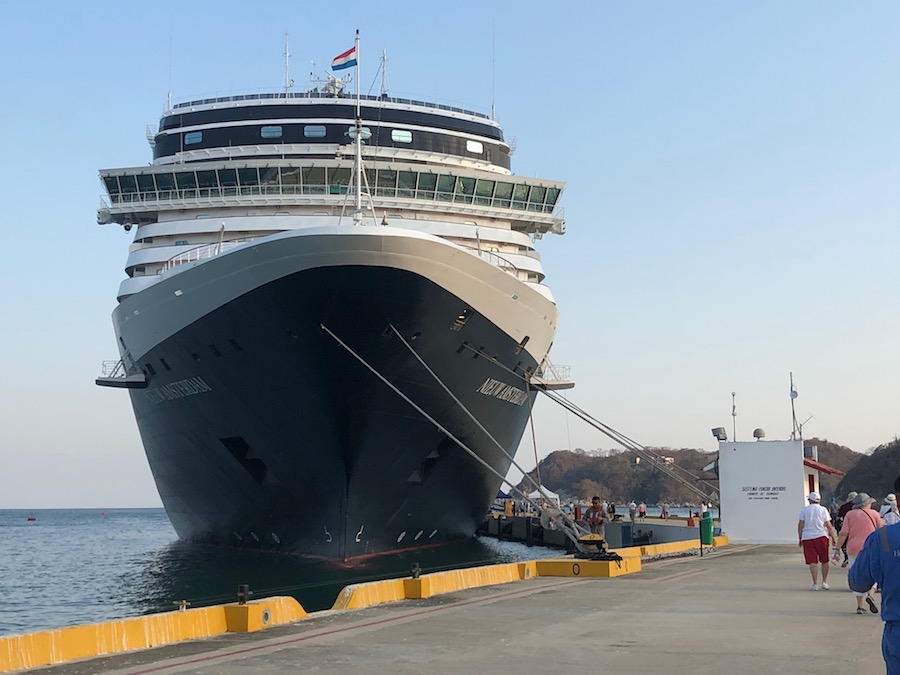
We pulled out of port as the sun sank into the ocean.
I think I will put Huatulco on the list of cities for a return visit (the list is getting really long).

